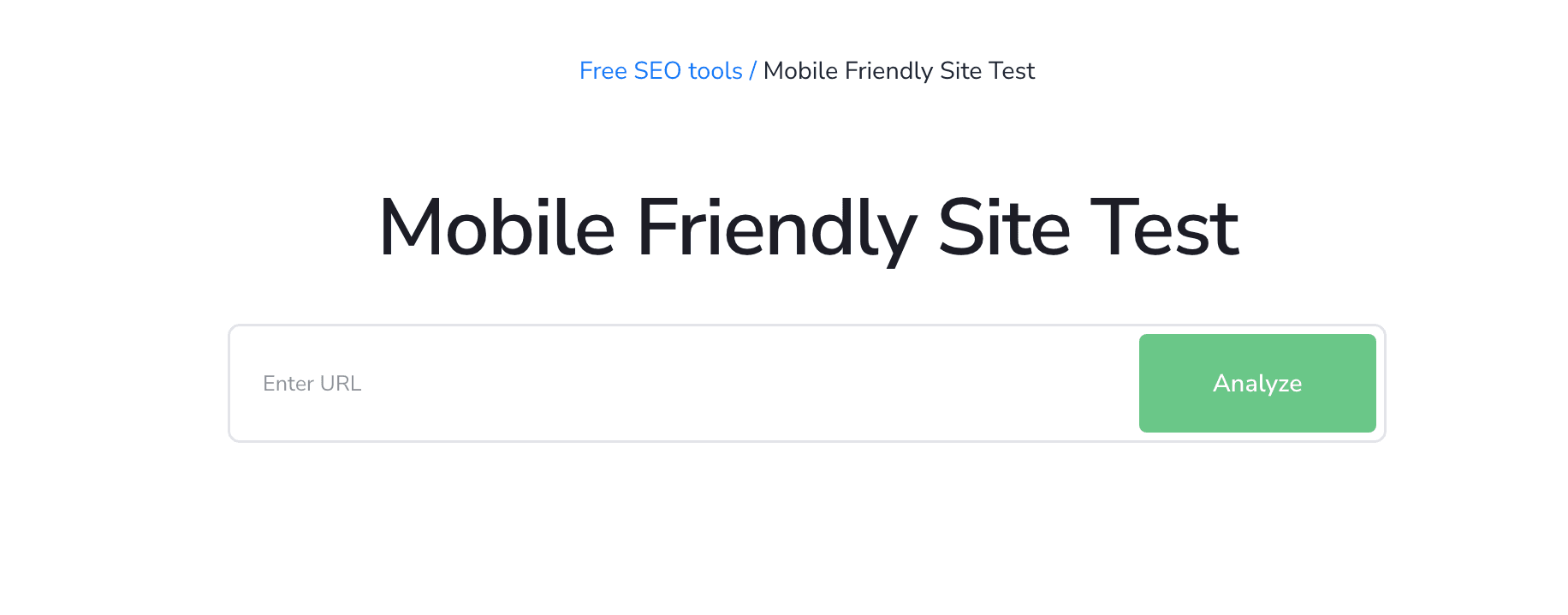Copyright © 2023 Alyssa Corso. All rights reserved.
Healthcare SEO: A Step-By-Step Guide to Better Rankings

If you want to increase your online visibility, drive more organic traffic, and generate patient leads, this guide to healthcare SEO is for you.
👋 Hi, I’m Alyssa Corso. I have 6+ years of healthcare SEO experience working with brands like K Health, Nourish, and Joon. I help companies build lean, effective, SEO strategies from the ground up. Want to chat? Book a call.
Why Healthcare SEO Matters
A 2023 survey shows that 77% of patients use search engines to research healthcare providers and treatment options.
Your audience is online, whether they’re looking for a nearby urgent care center, exploring telemedicine services, or understanding symptoms. Your brand needs to meet them where they are.
Healthcare SEO helps your organization show up when prospective patients search for:
Local healthcare services: “Urgent care near me”
Health conditions and symptoms: “What causes chest pain?”
Treatment options: “Best treatments for diabetes”
Specialist providers: “Top cardiologists in Chicago”
Ranking higher in search engine results can build trust, attract more patients, and ultimately grow your practice or healthcare organization.
Healthcare SEO is Different From Other Niches
Healthcare SEO poses different challenges and opportunities compared to other industries. Here’s what sets it apart:
Regulatory compliance
Healthcare content must comply with strict regulations, such as HIPAA, to ensure patient data privacy and avoid unverified claims.
Medical accuracy
Unlike other niches, healthcare content requires high levels of accuracy, often necessitating collaboration with medical professionals.
Trust and credibility
Healthcare content is a Your Money or Your Life (YMYL) niche because the information can significantly impact a person’s well-being. Therefore, your site should prioritize authority, trustworthiness, and expertise (E-E-A-T).
Local opportunities
Many healthcare searches have local intent, meaning searchers are looking for results in their area.
Highly competitive keywords
Healthcare keywords often face competition from hospitals, clinics, established publications, and national providers.
To create a winning healthcare SEO strategy, start by following these steps:
Step 1: Identify Your Niche
Before diving right into keyword research and content strategy, you need to define your niche.
Understanding your niche will help you narrow down the topics you want to focus on and build authority in those areas.
To establish your niche, ask yourself the following questions:
- What problem am I solving?
- Who has these problems?
- Where do these people look for the solution?
- What questions do they have?
Once you've answered these questions, you should have a better idea of how to find keywords that are relevant to your target audience.
Step 2: Conduct Keyword Research
In healthcare SEO, you should choose keywords that align with both user intent and your ability to create accurate, reliable, and trustworthy content:
Identify patient needs
Think about what your target audience is searching for. Are they looking for preventative care, treatment options, or healthcare education?
Use tools for insight
Leverage tools like Ahrefs, or SEMrush to find high-volume, low-difficulty keywords.
Search your keyword
Once you have a keyword in mind, search it on Google and understand what type of results are displaying. Understand what the search intent is (transactional, navigational, local, etc) and analyze your competitors.
Consider local SEO
For healthcare providers, local intent keywords like “pediatrician near me” or “24-hour pharmacy in [city]” might need separate landing pages (not blog articles) to satisfy user intent.
Incorporate long-tail keywords
Long-tail keywords can help you capture your unique target audience because they contain more words and are more specific. These keywords are also typically lower in difficulty.
Step 3: Optimize Your Website for Search Engines and Users
A well-optimized website helps both search engine crawlers and potential users or patients.
Focus on these important SEO elements:
On-Page SEO
Meta Tags: Write clear and compelling meta titles and descriptions that include target keywords.
Headings: Use H1, H2, and H3 tags to structure your content and make it easy to read and scan.
Alt text: Add descriptive alt text for images to improve accessibility and help search engines understand your content.
Internal linking: Link to related pages and blog posts to guide users through your site. You can do this by using relevant anchor text and choosing to add the link to words that are relevant to the link.
Technical SEO
Mobile optimization: Check if your site is mobile-friendly. 44% of patients search for information about doctors, conditions, or treatments on their mobile devices.
Page speed: Compress images and optimize code to improve load times.
Structured data: Use schema markup for healthcare services, doctors, and locations to help search engines display rich results.
Secure website: Use HTTPS to protect patient data and build trust.

Step 4: Create an SEO Content Style Guide
A style guide is a document that sets the standard for the quality of your content. When you hire writers (see step 5), you’ll share this document with them so your content is consistent.
What to include in your style guide:
- Content goal: Add what you’re looking to achieve through your content. Write a sentence or two to help the writer create content to meet your objective.
- Tone of voice: I would suggest an authoritative but empathetic tone while avoiding fluffy language.
- Sources to use: I advise clients to only use scientific studies and journals as sources and avoid linking to competitors.
- Language to use and avoid: Advise writers to use people-first language and avoid adding opinions or stories.
Step 5: Find Skilled Writers with Healthcare Expertise
Creating high-quality healthcare content requires specialized knowledge and writing skills. Here’s how to find the right writers for your team:
Look for industry experience
Find writers with a background in healthcare or medical writing to ensure accuracy and compliance with industry standards.
Check writing samples
Review portfolios and work from past clients to assess their ability to write clear, engaging, and SEO-friendly content within your industry.
Use freelance platforms and social media
Platforms like Upwork, Fiverr, or LinkedIn to connect with experienced writers.
Step 6: Create Content Briefs
Content briefs help the writers understand what to include and write about in the article.
Content briefs should include:
Title
Meta description
Word count
Competitors
Headers (H2s and H3s)
Search for your target keyword on Google and use the insights from the pages already ranking for that keyword.
Look at how long the articles are, what type of headers they have, and the sources they use.
Step 7: Implement Medical Review
Medical review is a process where a relevant medical professional reviews your SEO content for accuracy. They check the sources included and verify all of the information is correct and up to date.
Medical reviewers could be:
- Found on LinkedIn
- Professionals who work at your company
- Connections from past roles
How it works
The medical reviewer will look over the article after the writer completes it. They can add suggested edits to the article and the writer will review them and accept or reject them.
Step 8: Consider Local SEO for Healthcare Practices
Optimizing for local search can be a valuable search tactic for clinics, hospitals, and other local providers. Here’s how to get started with local SEO:
Google Business Profile: Claim and optimize your profile with accurate contact information, hours, and services.
Local citations: Check that your name, address, and phone number (NAP) are consistent across online directories.
Patient reviews: Encourage satisfied patients to leave reviews on Google, Yelp, and other platforms.
Location and condition pages: Create individual pages for each location or condition you treat with specific keywords and information about services offered.

Step 9: Monitor and Measure Your Success
SEO is an ongoing process that requires regular monitoring and adjustments. Use analytics tools to track your performance:
Google Analytics: Measure traffic, bounce rates, and conversions.
Google Search Console: Monitor keyword rankings, impressions, and crawl errors. You can also use SEO Gets (affiliate) for a simplified, yet helpful view of your search console data.
Rank tracking tools: Keep tabs on how your target keywords perform over time using tools like Ahrefs or SEMRush.
Adjust your strategy based on data insights, such as updating underperforming content or optimizing pages that drive significant traffic.
Alyssa’s Thoughts
Healthcare SEO isn’t just about ranking on Google, it’s about connecting with patients when they need you most.
By focusing on keyword research, technical optimization, quality content, and local SEO, you can drive meaningful growth for your business.
Want to work together? Let’s chat!

